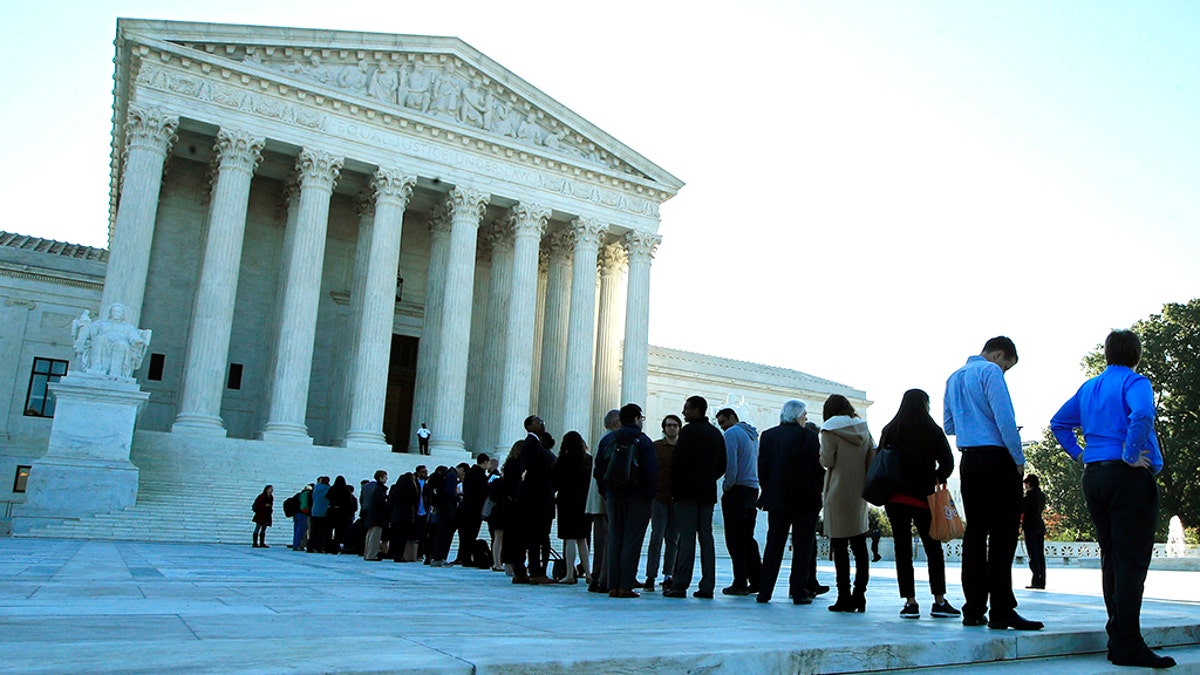
FILE -- (AP)
The Supreme Court on Monday took a pass on deciding the limits of partisan gerrymandering – or efforts by state legislatures to create voting maps most favorable to one political party.
The justices dismissed separate lawsuits from Democratic Wisconsin voters and Republican Maryland voters, who challenged the congressional maps drawn by their legislatures.
In the Wisconsin case, the court on narrow grounds said 12 Democratic voters who brought the suit lacked “standing” or jurisdiction to bring the legal action
In throwing the case back to the lower courts, the high court sidestepped the larger issue: endorsing a workable standard going forward that would apply nationwide.
“We leave for another day consideration of other possible theories of harm not presented here and whether those theories might present justiciable claims giving rise to statewide remedies,” wrote Chief Justice John Roberts for the unanimous court.
That case could come from North Carolina pending lawsuits over its voting boundaries. The justices could decide in coming weeks to accept that appeal, which would be argued in the court’s next term starting in October.
In response, Dale Ho, director of the ACLU’s Voting Rights Project, responded, “The Supreme Court missed an opportunity today to lay down a firm marker as to when partisan gerrymandering is so extreme that it violates the constitutional rights of voters. But the court permitted lawsuits against unfair maps to continue.”
The lack of a definitive ruling on the simmering issue adds greater uncertainty to efforts to reform the map-drawing process, and the high court’s rulings could make it harder to bring such legal challenges going forward.
The stakes are huge: the balance of power in state legislatures and Congress could tip in coming years, particularly after the 2020 census, when voting boundaries will be redrawn based on population changes.
At issue in Maryland was whether Republican voters could go to court and challenge a redistricting plan they say violated their First Amendment rights. That 2011 voting map shifted the political balance in the state's rural 6th congressional district, turning a traditional GOP stronghold to Democrat in an overall blue state.
The justices also heard arguments over legislative boundaries created by Wisconsin Republicans, and whether those lines were unfairly out of balance with the state's closely divided political makeup.
The Wisconsin case is Gill v. Whitford (16-1161).
The Maryland case is Benisek v. Lamone (17-333).




